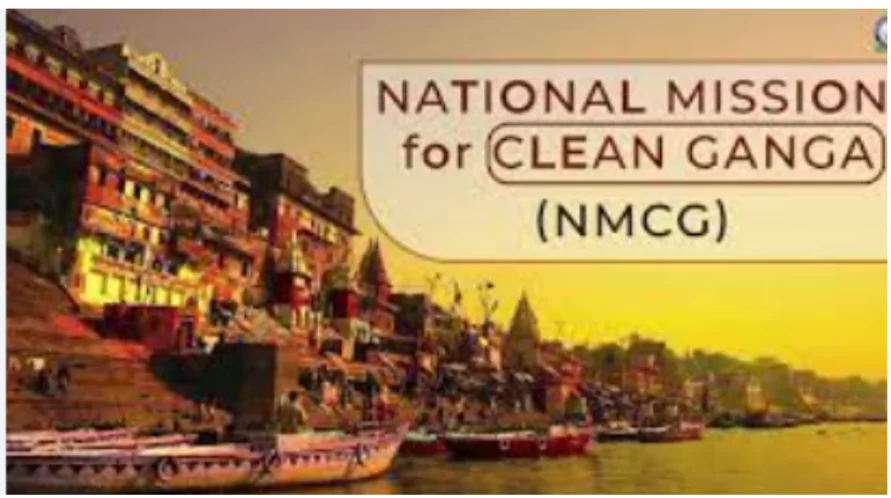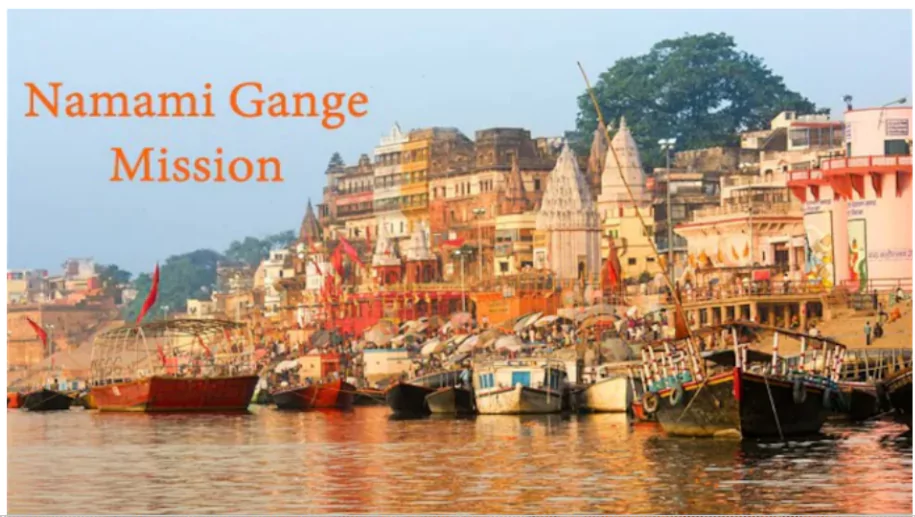Recently, the head of the National Mission for Clean Ganga (NMCG), tasked with cleaning the Ganga and its tributaries, expressed concern about the slow progress of projects in various states.
About National Mission for Clean Ganga (NMCG)
- The National Mission for Clean Ganga (NMCG) is managed by the National Ganga Council.
 It focuses on the rejuvenation, protection, and management of the Ganga River.
It focuses on the rejuvenation, protection, and management of the Ganga River.
- NMCG was established as a registered society on August 12, 2011, under the Societies Registration Act of 1860.
-
Objectives of National Mission for Clean Ganga
- Improve Sewage Treatment: Upgrade existing sewage treatment plants to reduce river pollution.
- Maintain Natural Flow: Ensure natural water flow and seasonal changes in the river.
- Preserve Water and Vegetation: Protect surface water, groundwater, and river basin vegetation.
- Conserve Biodiversity: Protect aquatic life and ecosystems along the river.
- Public Involvement: Encourage community participation in river management and protection.
Enroll now for UPSC Online Course
About Namami Gange Mission
- Namami Gange is an integrated conservation mission.
- It was launched in June 2014 by the Indian government.
 Nodal Ministry: Ministry of Jal Shakti.
Nodal Ministry: Ministry of Jal Shakti. - Global Acknowledgment: UNESCO recognized Namami Gange as one of the world’s top ten campaigns for restoring ecological balance.
- Cities on the bank of river Ganga: Haridwar, Allahabad, Mirzapur, Ghazipur, Patna, Bhagalpur, Baharampur, Kolkata, Bhagalpur, Rishikesh, Kanpur, Jajmau.
- Main pillars of the Namami Gange Programme are:-
- Sewerage Treatment Infrastructure
- River-Front Development
- River-Surface Cleaning
- Bio-Diversity
- Afforestation
- Public Awareness
- Industrial Effluent Monitoring
- Ganga Gram
- Reasons for Slow Progress in Ganga Cleaning Projects
- Delayed Funding: Projects often face delays due to late receipt of funds, particularly in the beginning of the financial year.
- Complex Procedures: Bureaucratic hurdles and lengthy approval processes can slow down project implementation.
- Lack of Coordination: Coordination issues between different government agencies and departments can hinder progress.
- Technical Challenges: Some projects may encounter technical difficulties or require specialized expertise that can delay their completion.
Key challenges faced by the Namami Gange mission
- Tardiness in project execution: The pace of river-cleaning projects is very slow in various states.
- Inter-State Collaboration: Working with multiple states creates coordination challenges, leading to delays and uneven progress.
- Operational Efficiency: Many sewage treatment plants (STPs) are set up, but maintaining and operating them effectively remains a concern.
- Behavioral Change: Building sustained public awareness and changing behaviors takes time and varies by region, impacting overall effectiveness.
- Technical and Logistical Challenges: Difficulties in constructing and upgrading STPs and logistical issues like land acquisition cause delays.
Check Out UPSC CSE Books From PW Store
Significance of sewage-management infrastructure in the Namami Gange mission.
- Core component: Sewage-management infrastructure is crucial for reducing pollution in the Ganga and its tributaries.
- Largest allocation: A significant portion of funds under the Namami Gange mission is allocated to these projects.
- Public Health Improvement: By preventing untreated sewage from contaminating the river, the infrastructure contributes to better public health outcomes.
- Sustainable Development: The development and maintenance of sewage-management infrastructure are aligned with sustainable development goals.
- It supports environmental conservation, promotes public health, and ensures the long-term viability of the river ecosystem.
![]() 21 Aug 2024
21 Aug 2024
 It focuses on the rejuvenation, protection, and management of the Ganga River.
It focuses on the rejuvenation, protection, and management of the Ganga River. Nodal Ministry: Ministry of Jal Shakti.
Nodal Ministry: Ministry of Jal Shakti. 